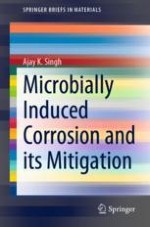2020 | OriginalPaper | Buchkapitel
4. Experimental Details and Strategies to Control Corrosion
verfasst von : Ajay K. Singh
Erschienen in: Microbially Induced Corrosion and its Mitigation
Verlag: Springer Singapore
Aktivieren Sie unsere intelligente Suche, um passende Fachinhalte oder Patente zu finden.
Wählen Sie Textabschnitte aus um mit Künstlicher Intelligenz passenden Patente zu finden. powered by
Markieren Sie Textabschnitte, um KI-gestützt weitere passende Inhalte zu finden. powered by
